DSRIP Workforce Impact Analysis Report
- Report is also available in Portable Document Format
February 2018
Slide 16 UPDATED and CORRECTED –November 26, 2018
DSRIP Workforce Impact Overview
- At the start of DSRIP, Performing Provider Systems (PPS) made workforce spending commitments to support DSRIP goals and priorities
- PPS committed to spending $415M over 5 years on workforce transformation. At the DSRIP halfway point, DY3Q2, they had spent $247.5M
- Some examples of investments include:
- Recruiting high need and emerging titles
- Developing workforce pipelines in collaboration with high schools and institutions of higher learning
- Creating new college credit–bearing and certificate programs for emerging workforce titles, as well as scholarship funds for these students
- Providing training in DSRIP initiatives, and other DSRIP priorities such as VBP and cultural competency
- Creating incentives and bonuses to improve workforce retention and recruitment in underserved areas
- Building change management competencies to help facilitate organizational readiness for an integrated delivery system and support systems for trainers including adoption and sustainability of training solutions
- PPS are required to report spending and impacts in 3 categories: new hires, redeployment and retraining.
- The DOH has received 2.5 years of this data from PPS over the first half of DSRIP and has identified how PPS workforce investments impact delivery system transformation, such as strengthening and integrating behavioral health and the shift from institutional to community– and home–based healthcare.
This report contains some of these findings.
DSRIP Workforce Impact Report:
Definitions and Parameters
February 2018
Regional Breakdown
This report presents findings by 6 state regions. Regions include the following PPS:
- Long Island: Suffolk Care Collaborative and Nassau Queens PPS
- New York City: Advocate Community Partners, OneCity Health, Mt. Sinai, Community Care of Brooklyn, NY Presbyterian, NY Presbyterian/Queens, SIPPS, NYU Lutheran, Bronx Health Access and Bronx Partners for Healthy Communities
- Capital District and North Country: Better Health for NENY, Adirondack Health Institute and Alliance for Better Health Care
- Mid–Hudson: Montefiore Hudson Valley Collaborative, Refuah and WMCHealth
- Mohawk Valley, Southern Tier, Central NY and Tug Hill: Leatherstocking CHP, Central New York CC, Care Compass Network and North Country Initiative
- Western and Finger Lakes: Millennium, Community Partners and FLPPS
Workforce Locations Required for Impact Analysis Reporting
- Outpatient Behavioral Health
- Diagnostic & Treatment Center (D&TC)
- Article 16 Clinics
- Home Care Agency
- Article 28 Clinic
- Inpatient
- Non–Licensed CBO
- Nursing Home/SNF
- Private Practice
Healthcare Transformation Titles
Of 74 healthcare workforce titles reported on, the titles below were identified as important to for healthcare transformation success. These 22 titles were also used in previous DOH Vacancy Rate reporting.
- Primary Care Physician
- Primary Care Nurse Practitioner
- Psychiatric Nurse Practitioner
- Staff Registered Nurse
- Licensed Practical Nurse
- RN Care Coordinators/Case Managers/Care Transitions
- Psychiatrist
- Psychologist
- Medical Assistant
- Social and Human Service Assistants
- Substance Abuse and Behavioral Disorder Counselors
- Nursing Aid/Assistant
- Certified Home Health Aide
- Personal Care Aide
- Licensed Clinical Social Worker
- Bachelor´s Social Worker
- Licensed Master´s Social Worker
- Social Worker Care Coordinator/Case Manager/Care Transition
- Care Manager/Coordinator
- Care or Patient Navigator
- Community Health Worker
- Peer Support
Data Limitations
While the following report represents a directionally accurate picture of healthcare workforce impacts, the data has some limitations, including:
- Individual providers and partners may report their impacts to multiple PPS, so figures may be duplicative;
- Individual providers and partners may not have reported in all periods, resulting in incomplete data;
- Due to a change in the definition of "retraining", retraining figures may include instances of training, as well as retraining as defined by the Department;
- Job title categories were expected to follow Bureau of Labor Statistics (BLS) definitions. However, individual providers and partners may have differing interpretations of job titles and reporting categories, resulting in differing categorizations of the same data;
- Individual providers and partners may interpret "FTE" differently (one body v. 100% time), resulting in variations of "full" v. "partial" placements; and
- Data for "new hires" a) does not differentiate between vacancies filled and newly created positions, and/or b) can include untraceable redeployments when staff move from one organization to another.
Overall, the data presented does not provide conclusions; the report is only intended to provide the reader with information on the data submitted.
DSRIP Workforce Impact Report:
New Hires
February 2018
New Hires
- New Hires are defined as all personnel hired as a result of DSRIP, exclusive of personnel who are redeployed.
- New Hires include all new employees who support the DSRIP projects and PPS infrastructure, and may include executive and administrative staff, professional and para–professional clinical staff, and professional and para–professional care coordination staff.
- The following charts illustrate a) which titles had the largest volumes of New Hires throughout all 25 PPS level, b) these top titles tallied to identify the most common titles of new hires by region, and c) the top three new hire titles by site location.
- The titles most commonly seen in the Top 3 for New Hires across NYS were:
- 1. Nurse Aides/Assistants
- 2. Care Manager/Coordinator
- 3. Nurse Managers/Supervisors*
- 3. Certified Home Health Aides*
- 3. Personal Care Aides*
- 3. RN Care Coordinators/Case Managers/Care Transitions*
* 4–way tie for 3rd top title
All PPS Top 10 New Hire Titles through DY3Q2
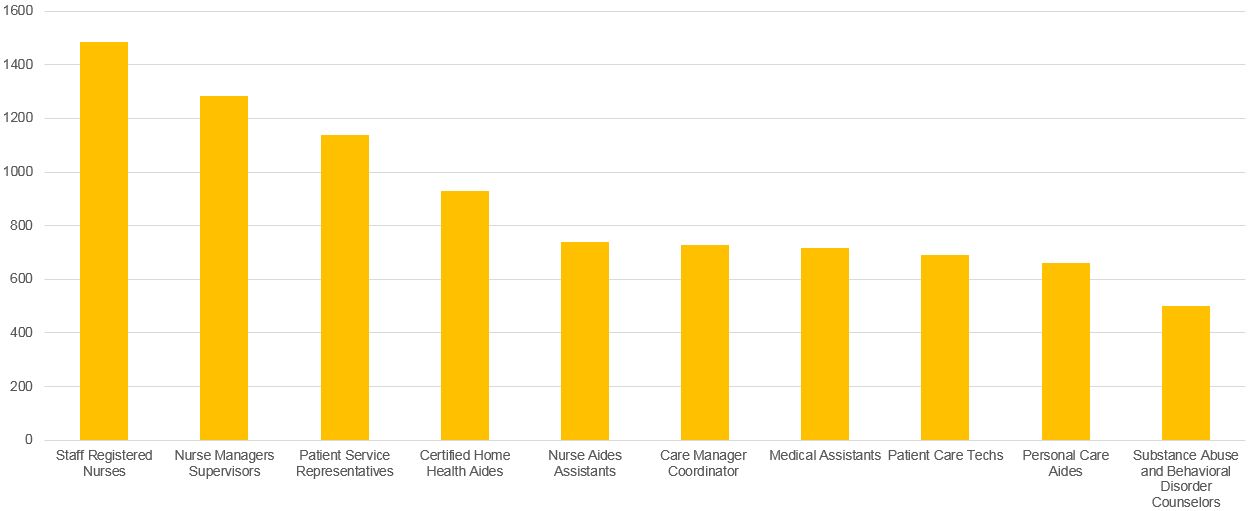
Top 3 New Hire Titles by Region through DY3Q2
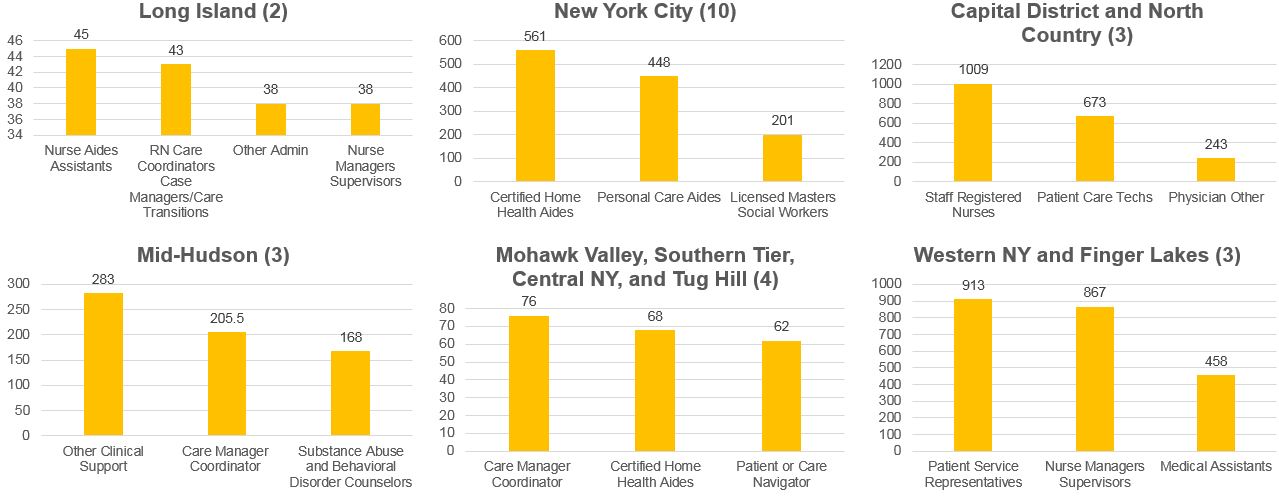
Top 3 New Hire Titles by Location through DY3Q2
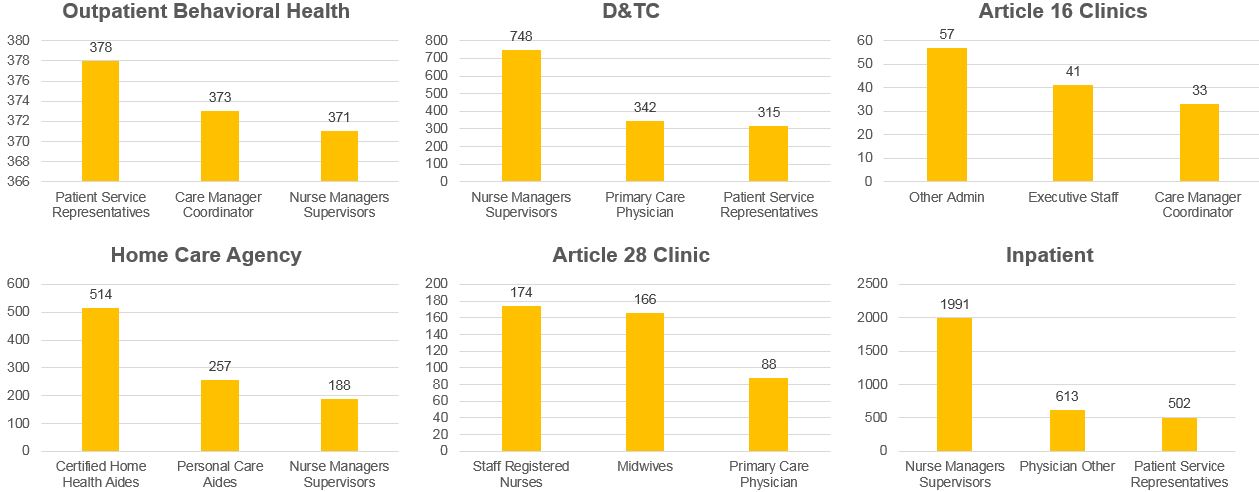

Emerging/Transformation Titles – New Hires
- The following slides show the aggregate volumes of New Hires (combined full and partial placements) for all PPS for top transformation titles through DY3Q2.
- Emerging/Transformation titles are roles in which the scope of work and competencies are changing or have changed due to transformation efforts such as care transitions, integrating care delivery and improving access to care.
- All 25 PPS are implementing Project 3.a.i., Integration of primary care and behavioral health services. Drilling down into primary care and behavioral health titles, these New Hire findings appear to reflect PPS progress toward:
- transitioning care away from institutions to community– and home–based care settings;
- strengthening and expanding primary care and behavioral health; and
- integrating these services.
Emerging/Transformation Title New Hires through DY3Q2
Updated and Corrected November 26, 2018
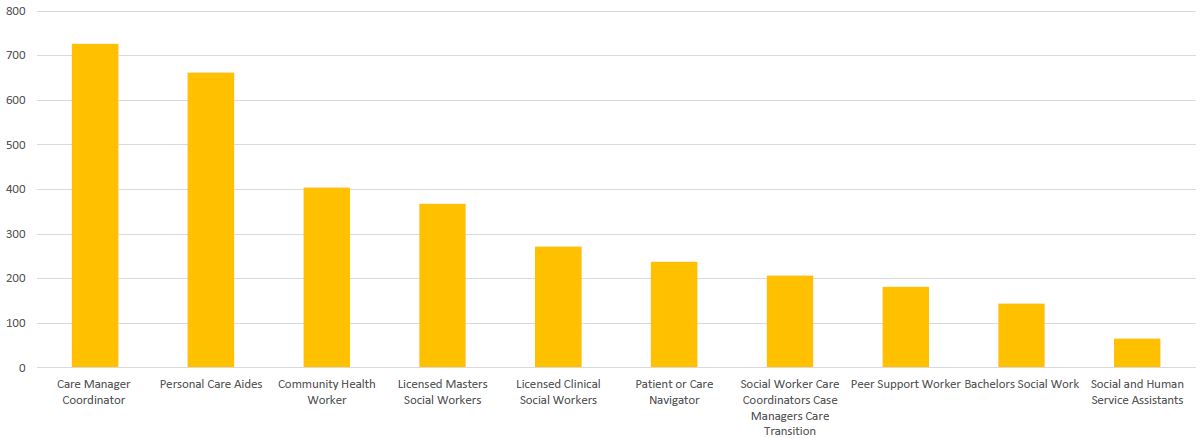
Primary Care Physician & Nurse Practitioner New Hires by Facility Type through DY3Q2
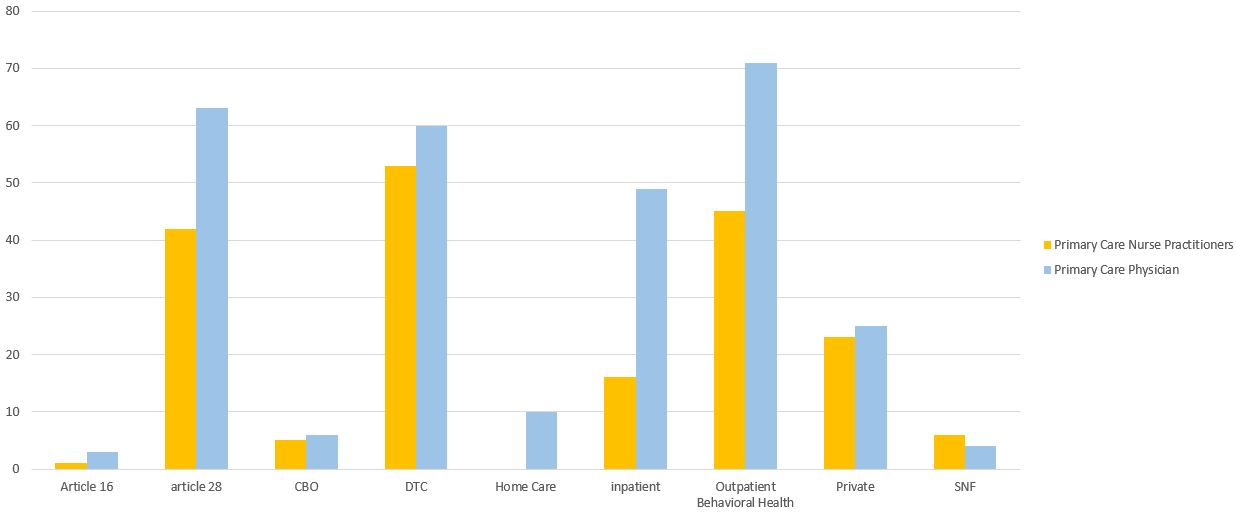
Behavioral Health New Hires by Facility Type through DY3Q2
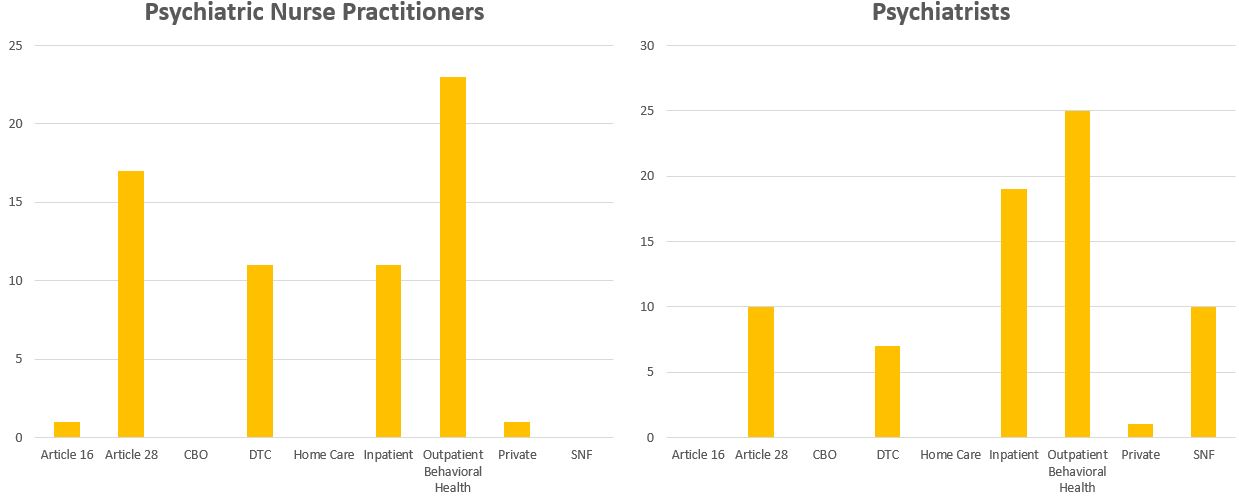
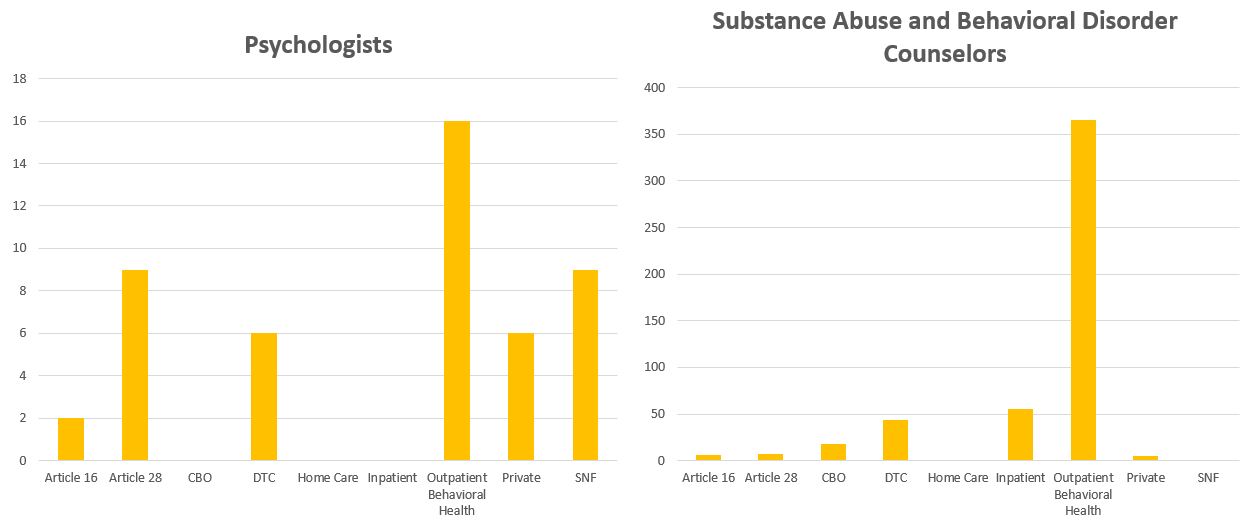
DSRIP Workforce Impact Report:
Retraining/Training
February 2018
Retraining/Training
- Retraining is defined as training and skill development provided to current employees of PPS partners for the purpose of redeployment or to employees who are at risk of lay–off. Skill development includes classroom instruction whether provided by a college or other training provider. It can include, particularly for at–risk employees, longer term training to support transition to high demand occupations, such as Care Manager or Nurse Practitioner.
- Retraining differs from training, which includes all formal skill development provided to any employees who provide services for the PPS selected projects or central support for the PPS.
- Due to changes in the definition of "retraining", some PPS reported all instances of training and/or retraining in the impact report.
- The following charts illustrate which titles had the largest volumes of Retraining throughout all 25 PPS. These top titles were then tallied to identify the most common titles retrained by region.
- The titles most commonly seen in the Top 3 for Retraining across NYS were:
- 1. Nurse Managers/Supervisors
- 2. Staff RN
- 3. Executive Staff*
- 3. Medical Assistants*
* 2–way tie for 3rd top title
All PPS Top 10 Retraining/Training Titles through DY3Q2
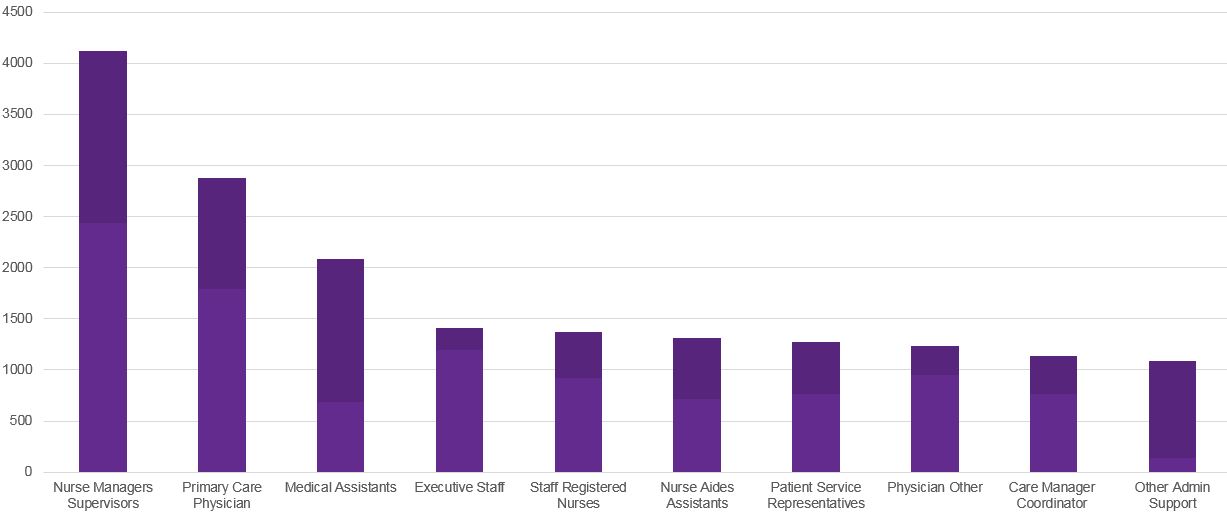
Top 3 Titles Retrained/Trained by Region through DY3Q2

Redeployment
- Redeployed personnel is defined as people who are currently employed by any PPS partners in DSRIP Year 1 and who transition into another job title, including those who transition to another job with the same employer.
- The following charts illustrate the largest volumes of redeployments to those titles at the PPS level. These top titles were then tallied to identify the most common titles redeployed to by region.
- The titles most commonly seen in the Top 3 for Redeployment across NYS were:
- 1. Other Registered Nurse
- 2. Executive Staff
- 3. Other Admin*
- 3. Nurse Managers/Supervisors*
- 3. Staff RN*
* 3–way tie for 3rd top title
All PPS Top 10 Redeployed Titles through DY3Q2
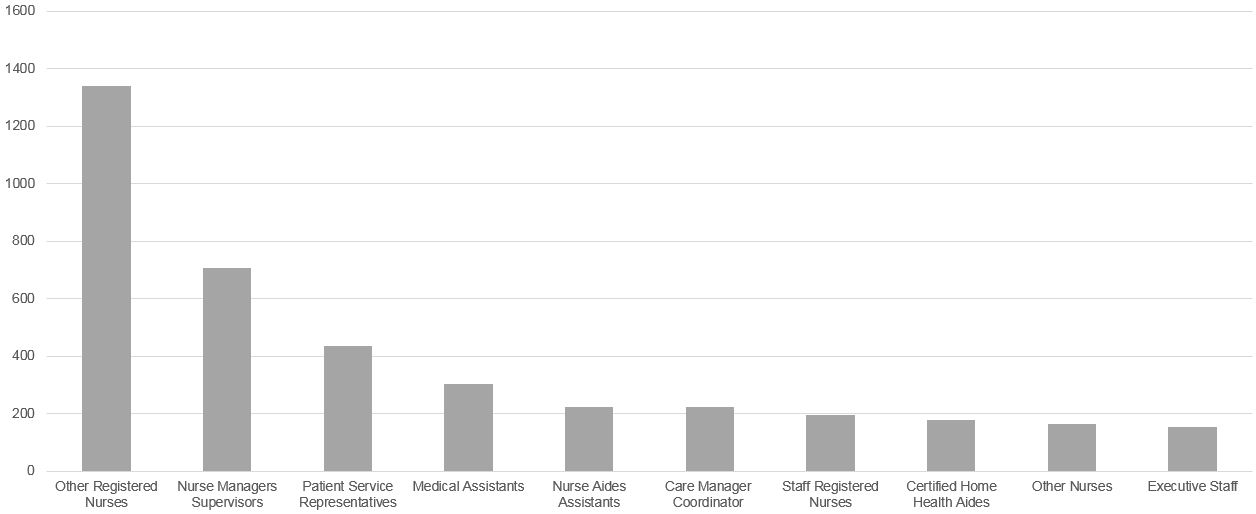
Top 3 Titles Redeployed by Region through DY3Q2
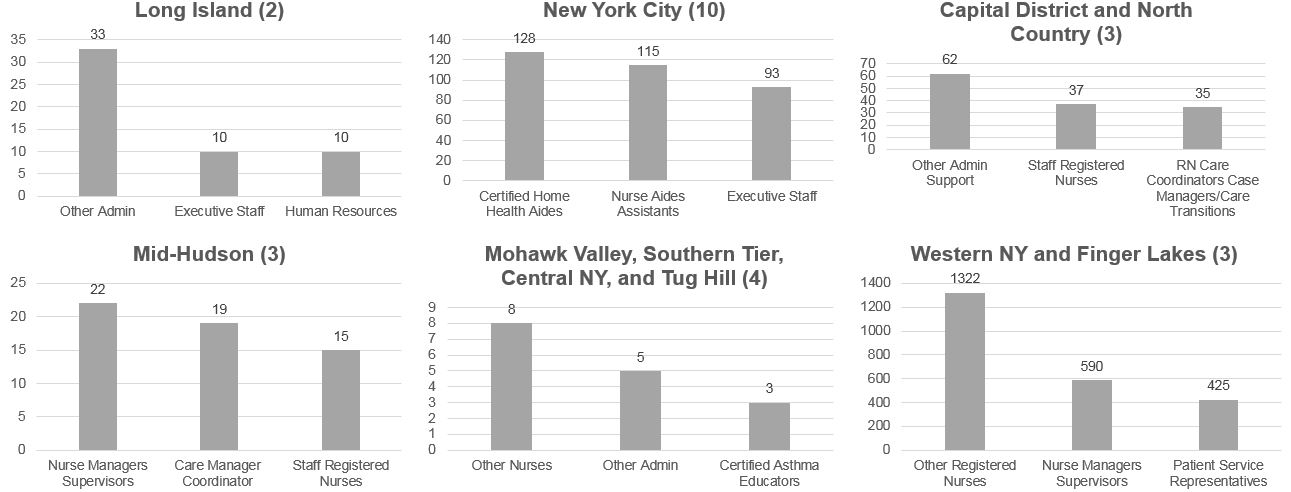
Follow Us